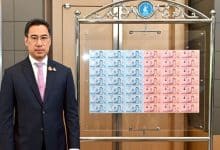Thai economic recovery slower than expected, Bank of Thailand governor confirms

Economic recovery in Thailand is underway but progress is slower than anticipated, particularly in the areas of tourism and exports, according to Sethaput Suthiwartnarueput, governor of the Bank of Thailand (BoT). In a recent business seminar, Sethaput expressed concerns over a less-than-rosy picture of the nation’s economy, with exports and tourism spending falling short of expectations.
Despite these challenges, he mentioned that Thailand is expected to welcome 29 million foreign visitors this year. In an effort to stabilise the economy and curb inflation, the central bank has incrementally raised its key rate seven times, reaching 2.25% since last August. Sethaput acknowledged the risk of inflation due to the El Nino weather pattern, which could potentially escalate food prices.
Still, he maintained that the overall economic recovery remains intact, albeit with some softness in growth and inflation. He also stated that the final economic growth figure for the year would likely fall below the BoT’s projected 3.6%, with a revised figure due to be published in September, reported Bangkok Post.
Sethaput further noted that the current level of the key rate is nearly balanced and could either be held steady or increased at the next meeting scheduled for September 27.
Thailand, Southeast Asia’s second-largest economy, has grappled with economic challenges stemming from a global growth slowdown, particularly from its main trading partner China, and dwindling investor confidence due to a prolonged period without a government following the May 14 General Election.
However, a new government is anticipated to form soon with the royal endorsement of Srettha Thavisin, a member of the Pheu Thai Party, as prime minister. This follows his victory in a parliamentary vote a day earlier.
Sethaput concluded that the BoT’s policy objective is to get the landing right, emphasising the need for careful considerations for medium-term growth, predicting it to be in the 3% to 4% range, with inflation targeted between 1% and 3%.
Latest Thailand News
Follow The Thaiger on Google News:


























